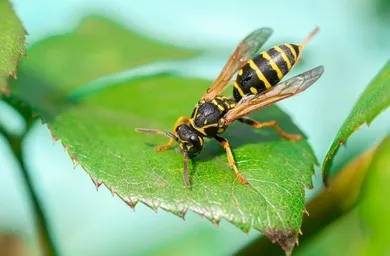
The Wasp: From Egg to Ecosystem Guardian
Share
Often misunderstood as aggressive pests, wasps are some of the most important and complex insects in the natural world. With over 30,000 known species, wasps play vital roles in ecosystems as predators, pollinators, and even pest controllers.
In this article, we’ll explore the life of a wasp, from its beginning as an egg to its adult life, diet, colony structure, and ecological role.
Stage 1: The Egg - A Hidden Beginning
The life of a wasp begins when the queen lays an egg, usually inside a small paper-like cell in a nest. Wasps undergo complete metamorphosis, meaning they pass through four distinct stages: egg, larva, pupa, and adult.
-
Where eggs are laid: In nests, wood, soil, or even inside other insects (for parasitic species)
-
Time to hatch: 5–8 days on average
Fun fact: In some parasitic wasp species, eggs are injected directly into other insects, where the larvae grow and feed from within!
Stage 2: Larva - The Hungry Baby
Once the egg hatches, the wasp becomes a larva a soft, legless grub that stays in its cell or host.
Larval behavior:
-
Eats constantly to grow quickly
-
Fed by adult wasps with chewed-up insects, nectar, or meat (depending on species)
-
Grows through multiple molts, shedding its skin
This phase lasts 1–2 weeks, depending on the species and temperature.
Stage 3: Pupa - The Transformation
After the larval stage, the wasp spins a silky cocoon and becomes a pupa. This is the transformation stage, similar to a butterfly’s chrysalis.
-
Inside the cocoon, the larva reorganizes into its adult form growing wings, legs, eyes, and antennae.
-
This stage lasts about 1–2 weeks.
Once complete, the adult wasp chews its way out of the cocoon and emerges.
Stage 4: Adult Wasp - Worker, Queen, or Male
Adult wasps take on different roles depending on their species and caste:
Caste roles in social wasps:
-
Queen: Lays all the eggs and leads the colony.
-
Workers (females): Build the nest, feed larvae, defend the colony, and gather food.
-
Males (drones): Only purpose is to mate with a queen, then they die.
Solitary wasps:
Not all wasps live in colonies. Solitary wasps (like mud daubers or parasitic wasps) live and hunt alone, usually building small nests or laying eggs in hosts.
What Do Wasps Eat?
As larvae:
-
Usually fed insect prey, meat, or nectar by adults.
-
Parasitic larvae eat the internal tissues of host insects.
As adults:
-
Most eat nectar, fruit, or sugary liquids.
-
Some also hunt other insects, especially to feed their young.
🛠️ Wasps are natural pest controllers, feeding on caterpillars, aphids, spiders, and flies.
How Do Wasps Live?
Social Wasps (e.g., yellowjackets, hornets, paper wasps):
-
Build nests out of chewed wood pulp, shaped like gray paper.
-
Colonies range from a few dozen to several thousand wasps.
-
The queen starts the nest in spring, and the colony grows through summer.
-
Most workers die in the fall, and new queens hibernate to start new colonies the next year.
Solitary Wasps (e.g., mud daubers, digger wasps):
-
Live alone
-
Build small nests or dig burrows
-
Lay one egg per nest cell and move on
Wasps in the Ecosystem
Though often feared, wasps are vital to nature:
✅ Benefits:
-
Pollination: Some wasps help pollinate plants, though less efficiently than bees.
-
Pest control: Wasps eat or parasitize crop-damaging insects.
-
Food source: Birds, spiders, and small mammals eat wasps.
⚠️ When They’re a Problem:
-
Wasps sting in defense, especially near nests.
-
Late summer wasps become aggressive scavengers, seeking sugar (which is why they hover around food and drinks).
Final Thoughts
Wasps are more than summer pests they’re hunters, builders, pollinators, and essential players in our ecosystems. Understanding their life cycle and behavior helps us coexist with them—and even appreciate their place in nature.
So next time you see a wasp buzzing nearby, remember: it might just be doing its job, helping keep the ecosystem in balance.
